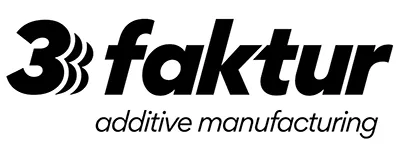
The abundance of different file formats encountered in the world of 3D printing often leads to uncertainties or confusion. The file formats used depend on the design software used, the 3D scanner utilized, and the 3D printer to be used. The following post introduces the most popular file formats and aims to provide orientation in the format maze. As it is not possible to cover all formats in this post, we have limited ourselves to the following 9 file formats (STP; IGES; STL; X3D; COLLADA; WRL; OBJ; PLY; AMF), but there are many more available.
CAD Formats
STP
The file format .STP is the file extension of a standard for the transfer of product data (STEP) and was developed to replace IGES. STP can do everything that IGES can, but it also stores tolerances, material properties, textures, material types, and topologies. While IGES is still widespread for hobby applications, the professional sector prefers the STP format.
IGES
The file format ‘Initial Graphics Exchange Specification’ was developed in the 1970s by the US Air Force in cooperation with Boeing. It was designed to facilitate data exchange between the Air Force’s systems and its suppliers. The format can also represent colors but not textures. It is somewhat outdated and no longer actively developed, but it remains popular among hobby users.
Mesh Formats
STL
Stands for ‘Standard Tessellation Language’ or ‘Stereo Lithography’ (the first 3D printing process). It can also be referred to as the standard “language” in the field of Computer-Aided Systems. Almost all CAx systems can work with this file format. The object data are stored in the form of a mesh (based on triangles). STL is the quintessential 3D printing format, practically all 3D printers, from hobby 3D printers to industrial machines, work with this format. More information about the STL format.
X3D
The ‘Extensible 3D’ format is based on XML and has the great advantage that files can be displayed in the browser using a plugin. The X3D format can also work with NURBS. According to the World Wide Web Consortium (W3C), X3D is intended to replace the WRL format and become a new standard in this area. Currently, it still plays a subordinate role in 3D printing since many programs for printer control cannot work with this format or only to a limited extent.
COLLADA
Like X3D, ‘COLLABorative Design Activity’ is XML-based. The corresponding file extension is .DAE. It is an open exchange format between 3D programs. A significant advantage of the format is the ability to represent animations. There are efforts to establish this format widely, but currently, it still plays a very minor role.
Color Formats
VRML (WRL)
The file format is popular when it comes to working with colored 3D models that are subsequently intended for printing. The ‘Virtual Reality Modeling Language’ is a descriptive language for 3D scenes and is displayed with the file extension .WRL. A mesh is used for the representation of geometries. According to the World Wide Web Consortium (W3C), the WRL format is intended to be replaced by X3D. Currently, WRL, along with OBJ, is by far the most popular format for color 3D printing.
OBJ
OBJ is an open file format for representing 3D geometries. It can use both polygons and curves and surfaces (NURBS), and it also stores the vertex positions. The textures and UV positions are saved in a separate file, usually in the .jpg format (“texture”). The file format is widely used since many design programs can export their data in OBJ format. Most 3D printers are capable of printing objects based on .OBJ files. OBJ, along with WRL, is the standard format for color 3D printing.
PLY
‘Polygon File Format’ files are mostly generated by 3D scanners and need to be converted by 3D design software so that the data can be used for 3D printing. In addition to the geometry of the object, data on edges, color values, and materials are also stored.
AMF
The ‘Additive Manufacturing File Format’ is an open, XML-based standard for describing 3D objects. The format includes information about the shape and composition of the object (color, material, grid lines). Conversion to STL can be done without data loss. The major advantage of AMF is its strong compressibility. The format is intended to replace STL in the future but has not yet gained widespread adoption.

About 3Faktur: 3Faktur specializes in 3D printing, rapid prototyping, and rapid manufacturing. We utilize HP’s Multi Jet Fusion technology and offer various materials for prototyping and series production. If you have any questions about your project, feel free to contact us.
